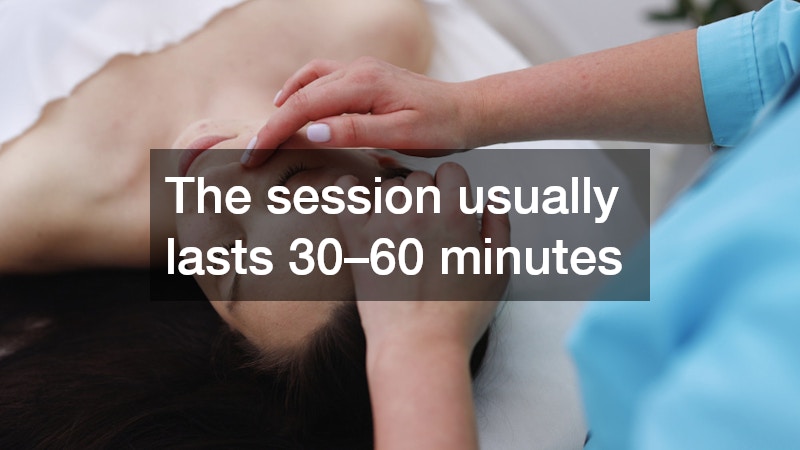Disclaimer: Gabrielle's. This site provides fashion and lifestyle content for informational purposes only.
Key Takeaways:
-
Microneedling stimulates collagen to reduce acne scars and improve skin texture.
-
Professional treatment is safer and more effective than at-home dermarollers.
-
Results require multiple sessions and proper post-care for optimal improvement.
-
Choosing an aesthetic med spa with good reviews ensures expertise and safety.
-
Microneedling can be combined with PRP, serums, or peels for enhanced outcomes.
-
Proper skin assessment is essential to avoid hyperpigmentation or complications.
-
Experienced practitioners customize treatments based on scar type and skin sensitivity.

Acne scars can affect confidence, skin texture, and overall appearance. While there are multiple ways to treat them, microneedling has become a leading non-invasive option for improving skin tone, stimulating collagen, and reducing scar visibility. However, the success of this treatment depends heavily on the expertise of the provider and the quality of the facility. For anyone considering microneedling, understanding the procedure and potential results is essential.
What is Microneedling?
Microneedling, also known as collagen induction therapy, involves using tiny needles to create controlled micro-injuries in the skin. These micro-injuries stimulate the body’s natural healing process, triggering collagen and elastin production. Collagen is the structural protein responsible for skin strength and elasticity, while elastin keeps skin supple.
Unlike aggressive laser resurfacing or surgical procedures, microneedling is minimally invasive. It is suitable for most skin types and can be adjusted in intensity based on the severity of acne scars and individual skin sensitivity. This versatility has contributed to its popularity among patients seeking noticeable improvements without prolonged downtime.
Key Benefits of Microneedling
-
Reduces Acne Scars: By stimulating collagen production, microneedling smooths out depressed scars over multiple sessions.
-
Improves Skin Texture: The procedure can minimize roughness and uneven skin tone, giving skin a smoother appearance.
-
Enhances Absorption of Skincare Products: Micro-channels created by the needles allow serums and topical treatments to penetrate deeper.
-
Minimally Invasive: Compared to surgery or deep chemical peels, microneedling carries less risk and requires minimal recovery time.
-
Versatility: It can be combined with PRP (platelet-rich plasma) or vitamin-infused serums for enhanced results.
While the benefits are compelling, microneedling outcomes are highly dependent on choosing an aesthetic med spa with good reviews that prioritizes safety, hygiene, and customization of treatments.
Understanding Acne Scars and Skin Types
Acne scars vary in type, depth, and severity. The most common categories include:
-
Atrophic (depressed) scars: These include icepick, boxcar, and rolling scars. They result from collagen loss during acne healing.
-
Hypertrophic scars: Raised scars that are less common but often more difficult to treat.
-
Post-inflammatory hyperpigmentation: Dark spots or discoloration that remain after acne heals.
Knowing your scar type helps a qualified practitioner determine the appropriate microneedling technique. Patients with darker skin tones must be especially careful, as improper treatment can sometimes trigger pigmentation issues. This underscores why selecting an aesthetic med spa with positive reviews is critical—they are more likely to have experienced practitioners familiar with all skin types.
What to Expect During a Microneedling Session

Visiting a med spa for microneedling involves several steps, each designed to ensure safety and maximize results.
1. Initial Consultation
-
Assessment of skin type, acne scar severity, and medical history.
-
Discussion of realistic results and the number of sessions needed.
-
Explanation of potential side effects, downtime, and aftercare.
2. Preparation
-
Cleansing of the treatment area to remove makeup, oils, and impurities.
-
Application of a numbing cream to minimize discomfort during the procedure.
3. The Procedure
-
The practitioner uses a microneedling device, which may be a dermal roller or an automated pen, to create controlled micro-injuries.
-
Depth and intensity are adjusted according to skin type and scar severity.
-
The session usually lasts 30–60 minutes.
4. Post-Treatment Care
-
Application of soothing serums or creams to promote healing.
-
Avoiding direct sun exposure and harsh skincare products for a few days.
-
Maintaining proper hydration and gentle cleansing routines.
Bullet Points: Immediate Effects and Recovery
-
Redness and mild swelling are common for 24–48 hours.
-
Tiny pinpoint bleeding may occur, particularly with deeper treatments.
-
Skin may feel tight or dry but typically returns to normal within a few days.
-
Multiple sessions (usually 3–6 spaced 4–6 weeks apart) are recommended for optimal results.
Choosing an aesthetic med spa with good reviews ensures that each step—from consultation to post-care—is handled professionally, reducing the risk of complications.
Potential Risks and Considerations
Microneedling is generally safe when performed by trained professionals, but potential risks include:
-
Infection: Using unsterilized equipment can introduce bacteria.
-
Scarring or hyperpigmentation: Overly aggressive treatments may worsen skin texture or pigmentation, especially in darker skin tones.
-
Allergic reactions: Some serums applied after treatment can cause irritation.
An experienced team at a reputable med spa can mitigate these risks by using sterile equipment, adjusting needle depth appropriately, and recommending suitable post-treatment skincare.
How to Choose the Right Med Spa
Finding the right med spa is crucial for safe and effective microneedling. Here are some tips:
Look for Experience and Credentials
-
Verify that the staff includes licensed aestheticians, dermatologists, or nurse practitioners trained in microneedling.
-
Ask about their experience specifically with acne scar treatments.
Check Reviews and Testimonials
-
Positive client reviews indicate consistent results and good customer service.
-
Look for feedback about both outcomes and the professionalism of the staff.
Evaluate the Facility
-
Cleanliness and organization are critical to prevent infection.
-
High-quality med spas will follow strict sanitation protocols and maintain modern equipment.
Ask About Customization
-
Treatments should be tailored to your skin type, scar severity, and lifestyle.
-
A reputable med spa will avoid a one-size-fits-all approach and may combine microneedling with serums or PRP for enhanced results.
Microneedling at Home vs. Professional Treatments
While home dermarollers are available, there are significant differences between DIY microneedling and professional treatments:
At-Home Microneedling
-
Shallow needles (usually <0.5mm) limit results.
-
Increased risk of infection if equipment isn’t sterilized.
-
No professional assessment to ensure treatment is appropriate for your skin type or scar severity.
Professional Microneedling
-
Customized needle depth and intensity for maximum effectiveness.
-
Sterile equipment and professional protocols reduce infection risk.
-
Access to advanced techniques like PRP, vitamin serums, or combination therapies.
The safety, precision, and effectiveness of professional microneedling make visiting an aesthetic med spa with positive reviews the preferred choice for most patients.
Enhancing Results After Microneedling
To maximize the benefits of microneedling, it’s important to follow recommended aftercare and complementary routines:
-
Gentle skincare: Use mild cleansers and avoid harsh exfoliants for at least one week.
-
Sun protection: Apply broad-spectrum sunscreen to protect healing skin.
-
Hydration: Keep skin moisturized to support the healing process.
-
Avoid makeup: For at least 24 hours to prevent irritation.
-
Follow-up sessions: Consistency is key—results appear gradually as collagen rebuilds.
Combining Microneedling With Other Treatments
Some patients achieve better results by combining microneedling with additional non-invasive treatments:
-
PRP (Platelet-Rich Plasma): Enhances collagen production and accelerates healing.
-
Chemical peels: Can improve skin tone and pigmentation alongside microneedling.
-
Laser therapy: Targets deeper scars or pigmentation issues.
Professional med spas can recommend the right combination based on your skin goals and condition, reinforcing the importance of choosing a highly rated aesthetic med spa.
Frequently Asked Questions About Microneedling
1. Does microneedling hurt?
A numbing cream is applied prior to the procedure, and most patients experience mild discomfort rather than pain.
2. How soon will I see results?
Initial improvements may appear within a few weeks, but full results typically require multiple sessions over several months.
3. Can microneedling treat all types of acne scars?
It is most effective for atrophic (depressed) scars but may be combined with other treatments for optimal results.
4. Are there side effects?
Temporary redness, swelling, or pinpoint bleeding is normal. Serious side effects are rare when performed by experienced professionals.
5. How do I maintain results?
Follow your provider’s post-care instructions, protect your skin from sun damage, and maintain a healthy skincare routine.
Final Thoughts
Microneedling is a highly effective, minimally invasive option for reducing acne scars and improving skin texture. However, its success relies heavily on professional expertise, proper technique, and safe practices. Understanding the procedure, risks, and aftercare is essential before undergoing treatment.
Choosing an aesthetic med spa with good reviews ensures you receive personalized care, access to experienced practitioners, and high standards of hygiene. By doing your research, asking questions, and evaluating past client experiences, you can enjoy safe, noticeable improvements in your skin and regain confidence in your appearance.
